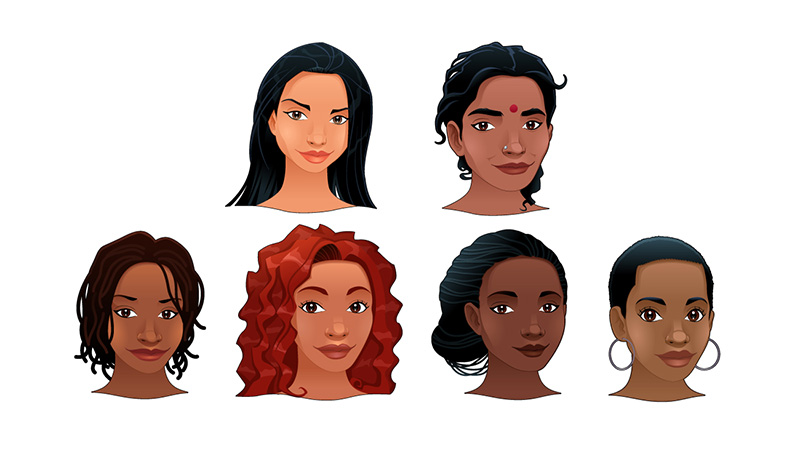Understanding your hair type is essential for choosing the right products and styling techniques that cater to your specific needs. By identifying your hair type, you can tailor your hair care routine to promote healthy, manageable, and beautiful locks. In this article, we will guide you through a step-by-step process to help you determine your hair type accurately.
Step 1: Observe Your Hair’s Texture
The first step in determining your hair type is to observe the texture of your strands. Is your hair fine, medium, or thick? Fine hair tends to be lightweight and often lacks volume, while thick hair is dense and has more volume. Medium hair falls somewhere in between, offering a balance of volume and manageability. Understanding your hair’s texture is crucial for choosing appropriate styling methods and products.
Step 2: Assess Your Hair’s Curl Pattern:
Next, assess your hair’s curl pattern, which indicates how your hair naturally forms waves or curls. The curl pattern is typically classified using a numerical system known as the “hair typing system,” developed by Andre Walker. Here are the different hair types according to this system:
- Straight: Straight hair lacks curl or wave and tends to be smooth and shiny.
- Wavy: Wavy hair forms loose, S-shaped waves that range from slight to pronounced.
- Curly: Curly hair forms spirals or ringlets with defined curls that range from loose to tight.
- Coily/Kinky: Coily or kinky hair has tight, spring-like curls or coils that range from small to densely packed.
Identifying your curl pattern will help you understand how your hair naturally behaves and what styling techniques and products work best for your hair type.
Step 3: Assess Your Hair’s Porosity
Hair porosity refers to its ability to absorb and retain moisture. The cuticle structure of the hair—which can be low, medium, or high porosity—determines it. Understanding your hair’s porosity helps in selecting the right products and moisture-retention techniques. Here’s how to determine your hair’s porosity:
Low Porosity: If your hair repels moisture and takes a longer time to dry, you likely have low porosity. The cuticles are tightly packed, making it more challenging for moisture to penetrate. Products with lighter formulations and heat-activated deep conditioning treatments work well for low-porosity hair.
Medium Porosity: Hair with medium porosity has a balanced ability to absorb and retain moisture. It is relatively easy to manage and style. Most hair types fall under this category, and a wide range of products and techniques can be used to maintain moisture and overall hair health.
High Porosity: If your hair quickly absorbs moisture but struggles to retain it, you may have high porosity. The cuticles are lifted or damaged, allowing moisture to escape easily. Deep conditioning treatments, leave-in conditioners, and sealing techniques with heavier oils or butter are beneficial for high-porosity hair.
Step 4: Evaluate Your Scalp Condition
While determining your hair type, it’s crucial to assess your scalp condition as well. Pay attention to whether your scalp tends to be oily, dry, or balanced. Oily scalps may produce excess sebum, requiring more frequent cleansing and lightweight products. Dry scalps may benefit from moisturizing products and gentle cleansing methods. A balanced scalp is neither excessively oily nor dry, and it can tolerate a wider range of products and techniques.
Determining your hair type is a fundamental step in developing an effective hair care routine. By understanding your hair’s texture, curl pattern, porosity, and scalp condition, you can choose the right products, styling techniques, and maintenance practices to keep your hair healthy and beautiful. Remember that hair types can vary throughout different areas of the head, so it’s essential to assess each section individually. Embrace and celebrate your unique hair type, and enjoy the journey of discovering the best ways to care for and style your tresses.




